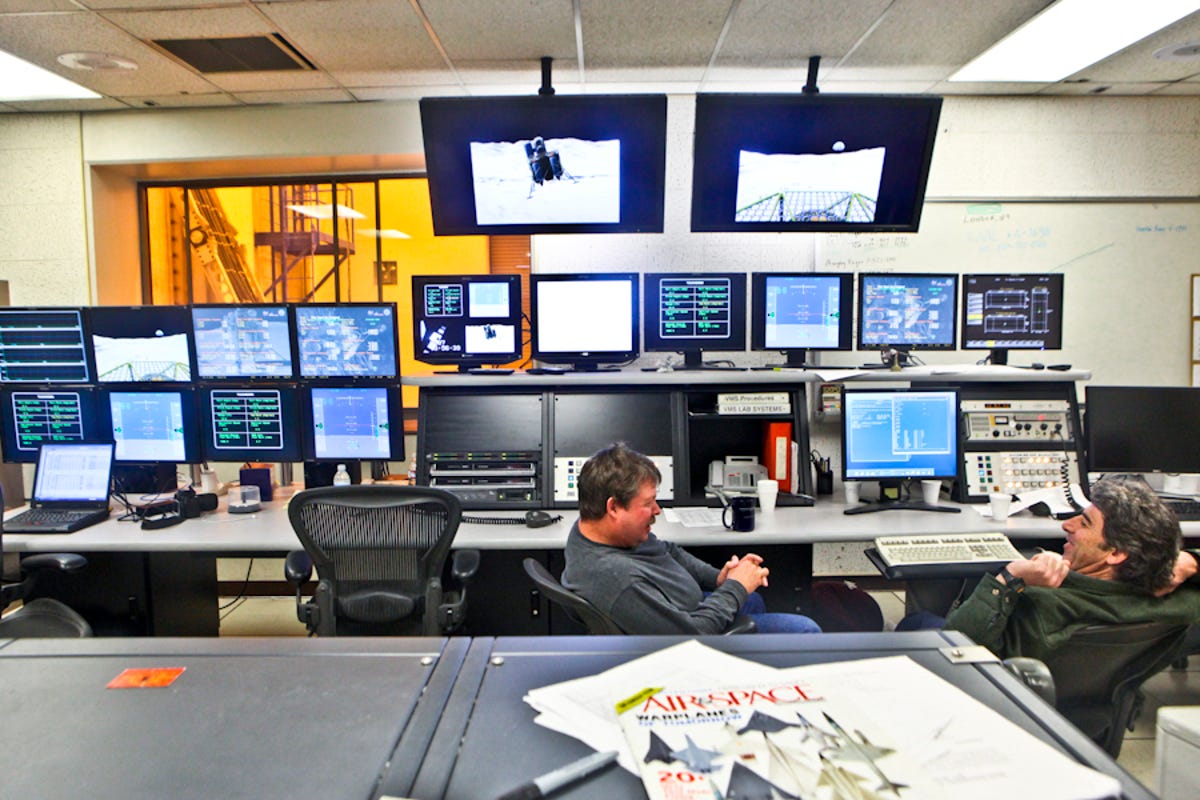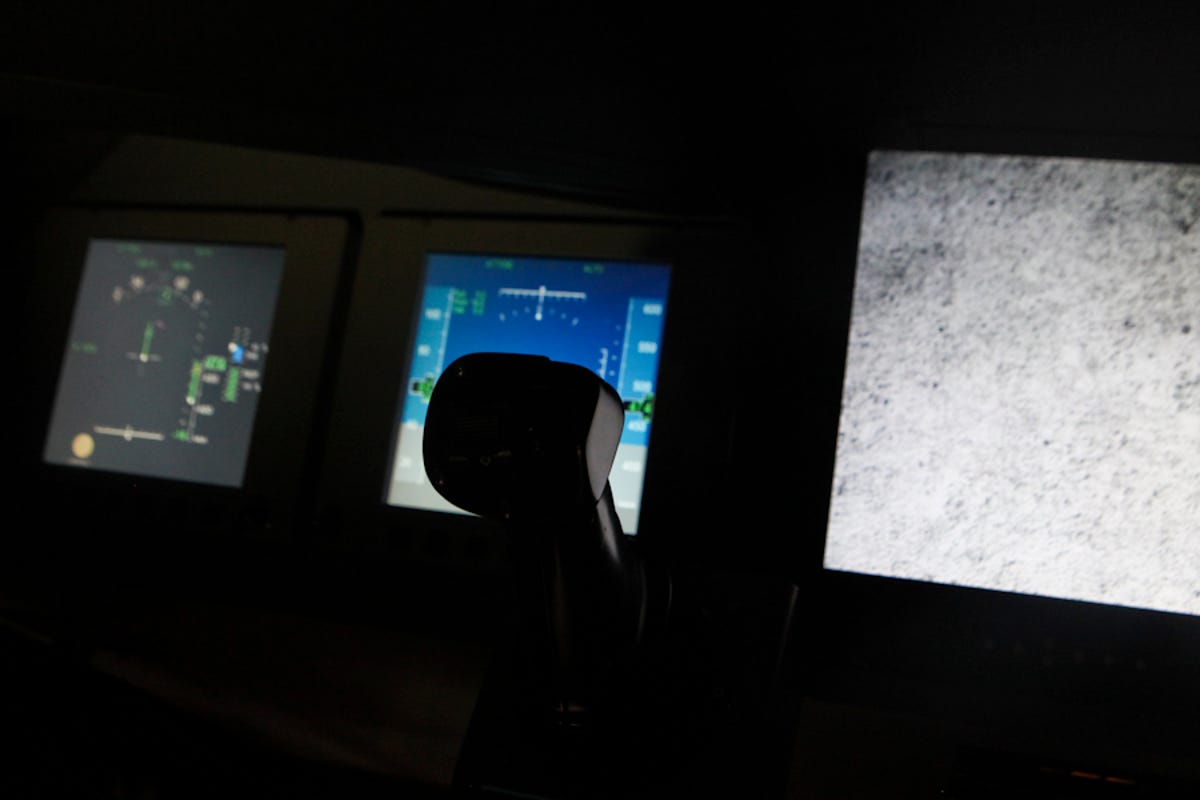Motion simulator readies NASA for moon landing (photos)
A look at NASA's massive Vertical Motion Simulator, where engineers are working on designs for the next generation of human occupied space vehicles, such as the Altair lunar lander.

Command center at the VMS
Moving as much as 60 feet vertically and 40 feet horizontally, the VMS gives pilots and engineers an opportunity to study flight characteristics of vehicles safely, in real time, and under accurate conditions.
Right now, NASA is studying the designs for the next generation of human occupied space vehicles. The Altair lunar lander, now in its third design iteration, will undergo changes based on the studies here, and eventually go into production and be used in the next generation of spaceflight.
VMS cabin module
Standing cockpits
At this early stage of the design for the Altair lander, some items are fixed in place by NASA engineers, but others are not, and the engineers working at the VMS can make suggestions as to the integration of systems into the cockpit.
Karl Bilimoria
Karl Bilimoria, Aerospace Engineer
Heads up
Through the yellow and blue mesh guard, the red landing site is visible.

Pilot's controls
Once the Altair lunar lander leaves orbit and is headed toward the moon, it flies automatically, with the manual controls activated for the final 500 feet of descent.
Motion base
Statistics
70-ton motion bar
Through testing and practice at the VMS, the facility will develop handling quality specification that will help set the design parameters once the equipment is in its final build stages.

